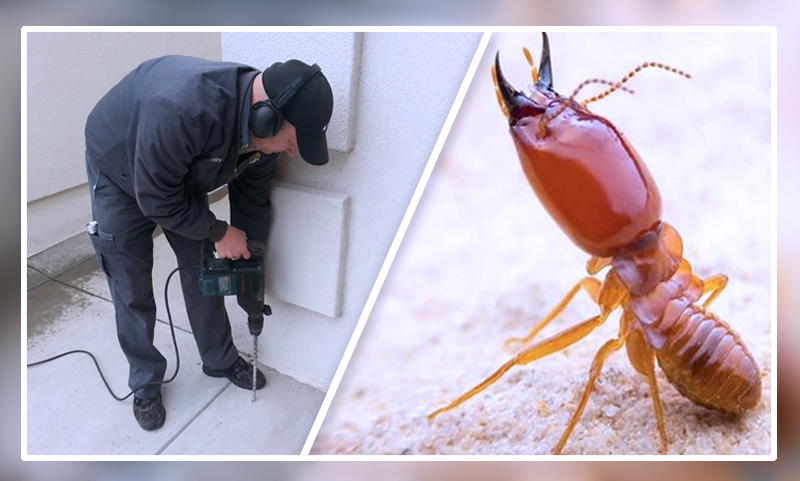Table of Contents
- Introduction to Termites
- Termite Seasonality
- Impact of Weather on Termite Activity
- Different Types of Termites
- Detection and Prevention Strategies
- Adopting a Year-Round Approach
- Case Studies and Real-Life Examples
Termites can be a homeowner’s nightmare, creating damage that is often unseen until it’s too late. It is crucial to implement consistent termite control methods to prevent these insects from causing harm to your property. If termite infestations are not dealt with promptly, they can result in expensive repairs, damage to the structure, and potentially health problems. This article explores why termite control should be a year-round priority and provides actionable strategies to protect your home.
Introduction to Termites
Termites are tiny, wood-eating insects that can cause damage to buildings and other wooden structures. Several species exist, but they all share the common trait of feeding on cellulose found in wood and wood-based products. You can look through the termite identification guide to learn more about creating the right solution to dealing with it. Even though termites are tiny, their impact can be tremendous, resulting in expensive repairs and sometimes even structural damages. Termites may go unnoticed for years as they silently devour wood from the inside out, weakening beams, floors, and roofing structures. This silent destruction emphasizes the need for awareness and preventive measures.
Termite Seasonality
While many believe termites are only active during the warmer months, this is a misconception. Some species, particularly those in warmer regions or heated structures, can be active year-round. Consequently, continuous termite control efforts must be implemented to keep these pests at bay. Seasonal changes might affect activity levels but do not eliminate the threat termites pose. Even a brief lapse in protection can provide termites with the opportunity they need to establish a foothold in your home.
Impact of Weather on Termite Activity
Weather conditions play a significant role in termite activity. For instance, warm and humid climates create ideal conditions for termites to thrive. Hot temperatures and humidity create the perfect conditions for termites to reproduce and grow their colonies. Additionally, heavy rainfall can increase moisture levels in the soil and wooden structures, making them more susceptible to infestations. Conversely, extreme cold or drought conditions can drive termites to seek shelter within homes, where they can find stable environments to continue their destructive activities.
Different Types of Termites
Several termites exist, including subterranean, dry wood, and damp wood termites. Each type has unique characteristics and preferred habitats, making its control and prevention methods slightly different. Comprehending the differences among these categories can help create more efficient control tactics customized to your circumstances.
Subterranean Termites
Subterranean termites are among the most destructive, living in underground colonies containing up to two million members. They construct mud tubes to move above the ground and access wood supplies, presenting a persistent danger all year. These termites require constant contact with soil for moisture, and their extensive tunnel systems make them particularly difficult to eradicate. Ensuring a barrier between your home and the soil can prevent these termites from gaining access.
Drywood Termites
Drywood termites can invade dry wood without needing to make contact with soil. They frequently go unnoticed and can result in substantial harm before signs of infestation become apparent. Unlike subterranean termites, drywood termites create their colonies within the wood, making their nests less accessible for traditional termite control methods. Regular inspections of wooden structures and prompt treatment of infestations are crucial in managing dry wood termite threats.
Dampwood Termites
Dampwood termites prefer moist, decaying wood and are less common than the other types. However, they can still cause substantial damage, particularly in areas with high humidity or moisture problems. These termites are usually found in wood with high moisture content, such as logs, stumps, and water-damaged structures. Ensuring your home is free from damp and decaying wood can mitigate the risk of wet wood termite infestations.
Detection and Prevention Strategies
Effective termite control involves early detection and preventative measures. Routine check-ups conducted by experts can detect indications of termite presence before it escalates into a significant issue. Signs of termite presence may consist of dropped wings, mud tunnels, and wood with a hollow sound when touched. Homeowners should also consider moisture control strategies, such as repairing leaks and ensuring proper drainage around the property. Chemical treatments and physical barriers can also prevent termites from entering structures. Implementing these strategies can dramatically reduce the likelihood of severe termite damage.
Adopting a Year-Round Approach
Given termites’ ability to remain active throughout the year, a year-round control plan is essential. It includes regular inspections and treatments to ensure your home stays termite-free. A comprehensive termite management plan can save homeowners thousands of dollars in repair costs. Understanding that termites are not just a seasonal issue can lead to better preparedness and prevention techniques. By remaining vigilant and proactive, homeowners can maintain the integrity of their homes and avoid the distress and financial burden caused by termite damage.
Case Studies and Real-Life Examples
Numerous real-life examples highlight the importance of year-round termite control. For instance, in southern states, where winters are mild, termites remain active and require constant monitoring and control measures. One case study from Florida revealed a homeowner who ignored winter termite activity, leading to extensive damage and costly repairs. Another example involves a family in Texas who maintained a year-round termite prevention plan and successfully avoided any significant infestations, showcasing the benefits of consistent vigilance and professional inspections.






